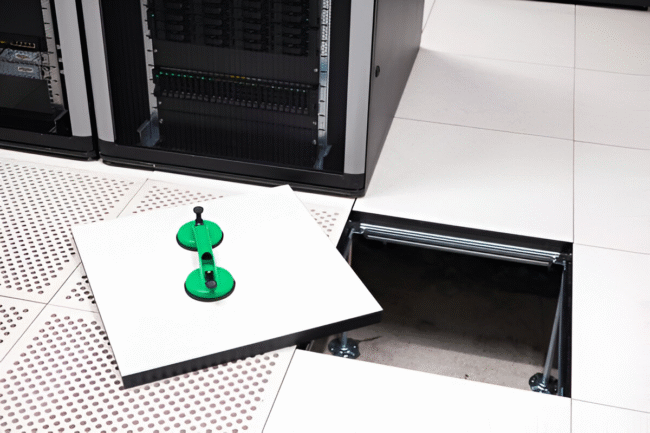
Selecting the correct floor access panel for residential projects can be challenging. This small part affects how a home works and looks, affecting both builders and homeowners. The wide range of choices often leads to confusion and costly mistakes.
The wrong option can leave homeowners unhappy with the outcome and builders in annoying reworks and financial difficulties. The incorrect panel can also affect a house’s charm and damage a builder’s reputation.
This article will simplify decision-making and offer practical advice to help builders and homeowners confidently select the right floor access panel, ensuring it suits the space and meets expectations.
Understanding Access Needs
In most cases, contractors help clients in figuring out needs, making the best decisions, and averting future problems by thoroughly understanding the environment and purpose. However, it’s also important to be aware of key factors that could affect panel selection.
What’s Below?
The systems hidden under the access panel dictate its requirements. Common systems include HVAC, plumbing, and electrical wiring; panels may also access crawl spaces or storage. Understanding what lies beneath informs decisions on durability and security. For example, a panel on electrical junctions should focus on security, while one crawl leading to a crawl space should be easily accessible.
Evaluating Access Frequency
Understanding how often an access panel will be used is key. This means considering if it will be open daily, monthly, or only for emergencies. Panels usually need strong hinges or designs that are easy to open. Those used for emergencies can focus on concealment and security. Knowing this usage helps prevent frustration and enhances functionality.
Prioritizing Security and Safety Considerations
Builders should figure out the necessary security level and ensure the panel satisfies safety regulations and allows safe foot traffic.
Evaluating Floor Panel Material Options
Picking the right floor access panel material is key. The best material balances strength, security, and design.
Steel is a common choice. It offers great strength and lasts for a long time.
Aluminum access panels are light and easy to manage. They work well in damp spots, like basements, and resist rust very well.
Meanwhile, composites and plastics are top picks for outdoor use. They are useful when a light or chemical-resistant material is needed.
Matching the Panel to the Flooring Type
Selecting a floor access panel requires careful consideration of the surrounding flooring. This choice ensures the design stays cohesive, often involving access door customization to achieve a seamless, integrated look.
Inlay panels work best for hardwood or tile floors. These panels have a recessed lid. The same flooring fits inside this lid, creating an invisible access point. Precise installation is important, as this helps avoid any gaps.
For carpet or vinyl, flush-mounted panels work best. They sit level with the finished floor. Some panels include trim to secure edges, preventing fraying. This design makes it easy to access, and the panel fits well on the floor.
Prioritizing Safety and Load Capacity
Selecting a floor access panel requires prioritizing safety and weight capacity. This prevents accidents and costly repairs. Each panel has a set weight limit; poor choices can cause injuries.
Strong locks and child-safe designs are important for homes with small children. Hidden latches create a flat surface, which lowers trip risks. Non-slip finishes are best. Use these in kitchens and bathrooms, where falls often happen. Considering these points ensures a safe and working access panel.
Easy Access and Low Maintenance
Floor access panels offer convenience and need little upkeep. Reducing service calls helps contractors build a formidable reputation.
Lift-Out vs. Hinged Panels
Floor access panels come in two main styles: lift-out and hinged. Lift-out panels provide wide openings and require storage space when removed. Hinged panels swing open but stay attached, making them ideal for areas accessed often, like basements.
Assisted Opening Mechanisms
Heavier panels often receive help from assisted opening mechanisms. Gas struts or torsion springs simplify lifting. This feature is especially helpful for elderly clients.
Gasketing and Sealing
Good gasketing makes a home more comfortable. It stops drafts and blocks moisture, which also helps save energy. Waterproof seals are vital for outdoor panels and basements. They protect against water damage.
Recessed Pans
Access panel lids often feature recessed pans. These features help the panel merge with the surrounding floor, boost its appearance and usability, and increase protection for the hidden structure below.
The Importance of Proper Sizing and Placement
The size and placement of a floor access panel are essential for its function and appearance. Wrong panel size often means costly rework.
Get Accurate Measurements
Understanding two key measurements is vital. The rough opening is the cut-out in the subfloor. The clear opening, however, is the unobstructed space available after the panel opens. Precise measurement of both dimensions is vital. This holds for builders and homeowners. Such accuracy helps prevent expensive delays and added costs.
Consider Panel Placement
A panel’s location determines its appearance and ease of use. For safety, avoid installing it in busy areas or under fixed furniture. All utilities, such as HVAC filters, must remain simple to access.
Follow Building Codes
Local building codes set minimum sizes for accessing systems like HVAC and plumbing. Choosing a panel that is too small can result in code violations and project delays. For compliance, always consult professionals or local authorities.
Unlocking Exceptional Value
Floor access panels enhance a home’s safety and increase its value. When contractors understand these features, they can provide homeowners with superior solutions.
Fire-Rated Options
Fire-rated panels are vital in garages and multi-family buildings. They help contain smoke and flames. For code compliance, always choose panels with safety certifications. Look for examples like UL or Intertek labels.
Acoustic Panels
Acoustic access panels are excellent for bedrooms or theaters because they reduce noise on floors. They can also raise a property’s value and add comfort, though they are not always needed.
Your Choice, Your Satisfaction
Choosing the best access panel is not complicated. Key steps include understanding specifications, evaluating materials, checking flooring compatibility, prioritizing safety, and finding unique features. These actions help individuals make choices that meet project needs.
A well-chosen floor access panel improves a home’s safety, look, and quality. It builds a contractor’s reputation. Homeowners also gain satisfaction and property value.
With this knowledge, contractors confidently select access panels for projects. Homeowners approach renovations with clarity. Informed decisions create a positive building experience. They lead to successful results.
